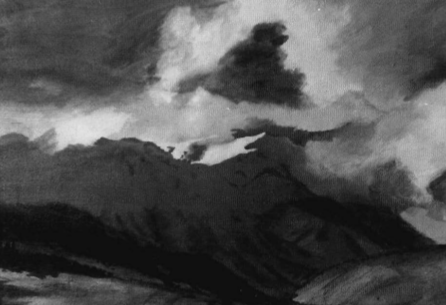Articles/Essays – Volume 06, No. 3
Introductory Note
Due to an unavoidable delay in the “Mormonism in the Twentieth Century” issue, the editorial staff decided to proceed with the preparation of this literature issue. It is not a special issue in the usual sense, but rather represents an accumulation of poetry and fiction as well as articles and essays relating to literature which have been accepted for publication and which it seemed appropriate to publish together rather than intersperse through several issues.
As the preparation of this issue proceeded, it became apparent that a common unifying thread ran through many of the pieces. That thread is pointed out in Robert Rees’s article ” ‘Truth is the Daughter of Time’: Notes Toward an Imaginative Mormon History,” which highlights the fundamental tension between history and literature as well as the common ground and goals these two disciplines share. That this tension is real is illustrated by Leland Fetter’s article on Bernard DeVoto and by the DeVoto letters edited and introduced by Wallace Stegner, as well as by Karl Keller’s review-essay on Nobel laureate Haldor Laxness’ novel on the Mormons, PARADISE RE CLAIMED, and Frederick G. Williams’ review of Samuel Taylor’s most recent historical novel, NIGHTFALL AT NAUVOO.
A variation on this theme is provided by Maurine Whipple’s story of the writing of THE GIANT JOSHUA, a novel about Mormon Pioneers in Southern Utah. Ms. Whipple’s comments reveal both the novelist’s desire to accurately reflect the past and the problems the novelist faces when people begin to see themselves too clearly in the fictional mirror. GIANT JOSHUA, DeVoto’S YEAR OF DECISION: 1846, PARADISE RECLAIMED, and NIGHTFALL AT NAUVOO are examples of works which attempt to make the past appear as “real” instead of as historically accurate. Such a recasting is dangerous, however, and per sonal biases and problems can significantly influence the outcome of such efforts, as is clearly the case with DeVoto’s earliest essays on Utah and Mor monism. Although a fiction writer’s credibility can at times be more tenuous than a historian’s, his influence can be greater and the effect his impressions produce can be both far reaching and long lasting.
If one were to characterize the novelist as one who expresses the human condition (past, present or future) in a highly personal and subjective manner and the historian as one who tries to reconstruct the past objectively, at times almost in spite of himself, then the writer who attempts historical fiction must obviously tread the middle ground, relying on historical evidence to reconstruct the past and relying on his imagination to people it with characters who live and breathe. Of course, there is something of the novelist in every historian and vice versa, and the difference between whether a work is received as fact or fiction often hinges on the passions of both the author and his audience. The interplay between history and literature is certainly dynamic, as the various works discussed in this issue amply point out, and serves a constructive function in enlarging our understanding.
While other pieces in this issue do not specifically relate to this theme, items such as Thomas Cheney’s “Red Hair In The Sacred Grove” and James Miller’s “The Town Of My Youth” illustrate how much of a feeling for the past can be conveyed through imaginative literature. But literature is not always meant to be historical, sometimes it is just there—to be enjoyed.
In “Our Last Days” Marshall Craig shows how poetry can be used to illustrate historical truth. Through well-chosen examples of poetry from Homer to Yeats he demonstrates the fact that men have always considered that they were living in the last days and offers some advice as to how each of us can make our own “last days” more fruitful.


 Back to full Issue
Back to full Issue

